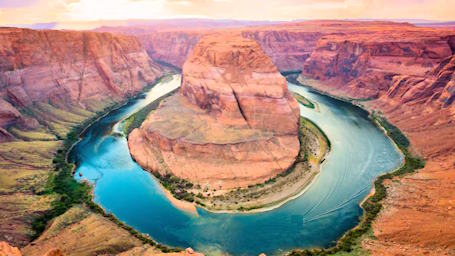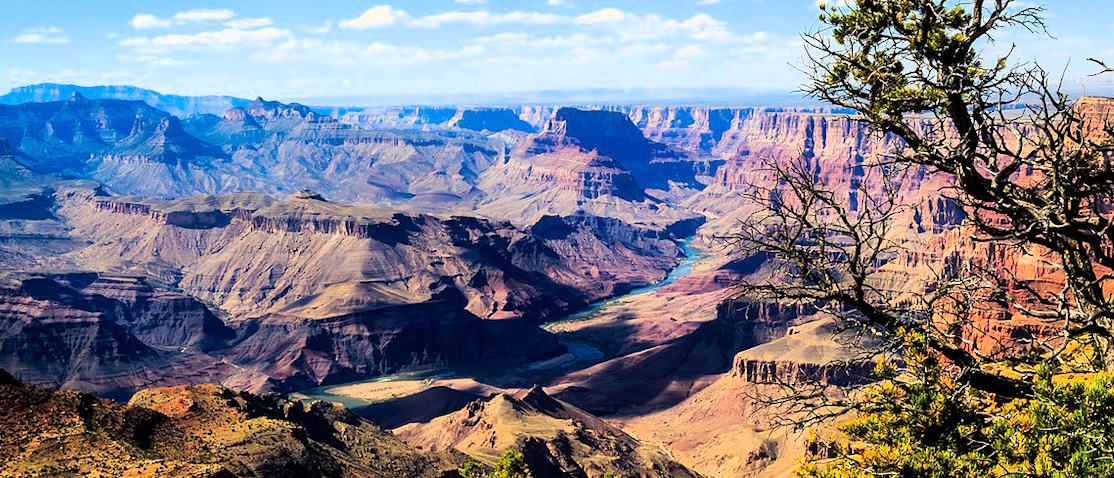Things to Do in Grand Canyon National Park
Exploring Grand Canyon National Park: Unforgettable Adventures and Experiences
Embarking on a Grand Canyon visit promises an extraordinary adventure, filled with unparalleled natural beauty and awe-inspiring wonders. From the rugged hiking trails that offer breathtaking vistas to the thrilling helicopter tours soaring above the vast canyon, every moment is a testament to the Earth’s magnificent creations.
Contents
- 1 What is the best month to go to the Grand Canyon?
- 2 Is 1 day enough in Grand Canyon?
- 3 Can you drive your car in Grand Canyon National Park?
- 4 What is the entrance fee to Grand Canyon National Park?
- 5 What is the best airport to fly into to visit the Grand Canyon?
- 6 Is Las Vegas or Phoenix closer to the Grand Canyon?
Explore the depths of the canyon on exhilarating river rafting expeditions, marvel at the vibrant colors of sunrise and sunset, and participate in ranger-led programs that unveil the park’s fascinating secrets. Grand Canyon Village, nestled on the rim, provides a glimpse into the area’s rich history and offers a charming retreat. Whether you’re an avid hiker, a stargazing enthusiast, or a traveler seeking tranquility, a Grand Canyon visit promises an unforgettable journey into the heart of nature’s grandeur. Plan your trip and prepare to be captivated by the sheer splendor of this iconic destination.
Grand Canyon National Park, a UNESCO World Heritage Site, is a treasure trove of natural wonders and breathtaking landscapes, offering visitors a diverse array of activities and experiences. From exhilarating outdoor adventures to serene moments of reflection, the park caters to every type of traveler.
What is the best month to go to the Grand Canyon?

The best month to visit the Grand Canyon depends on your preferences for weather and crowd levels. Generally, the spring months of March to May and the fall months of September to November are considered the best times to visit. During these periods, the weather is pleasant with mild temperatures, making outdoor activities enjoyable. Wildflowers bloom in spring, adding to the scenic beauty, and fall foliage enhances the landscape in autumn.
Avoiding the summer months of June to August is advisable due to the scorching heat, especially at the bottom of the canyon. Winter, from December to February, can be cold, and some areas of the park may be inaccessible due to snow and road closures.
Ultimately, the choice of the best month depends on your preferences for weather, crowd levels, and the type of activities you plan to enjoy during your visit.
Is 1 day enough in Grand Canyon?
While it’s possible to see some of the Grand Canyon in one day, spending only a day limits your experience and the sites you can explore. The Grand Canyon is vast and offers a wide range of activities, viewpoints, hiking trails, and visitor centers. To fully appreciate the natural beauty and explore some of the iconic viewpoints, consider spending at least 2 to 3 days at the Grand Canyon.
If you have only one day, plan your visit carefully and prioritize the specific areas or activities you want to experience. The South Rim, with its numerous viewpoints and visitor facilities, is the most popular and accessible section of the Grand Canyon. However, even a brief visit can leave a lasting impression, so make the most of your time by choosing a few key points of interest to explore.

Can you drive your car in Grand Canyon National Park?
Yes, visitors are allowed to drive their cars within Grand Canyon National Park. There are several parking areas throughout the park, and visitors can use their vehicles to access various viewpoints, trailheads, and visitor centers. However, during peak seasons, parking spaces can fill up quickly, so it’s advisable to arrive early or use the park’s shuttle system, which provides convenient transportation to key points of interest along the South Rim. Using the shuttle system can help reduce congestion, minimize environmental impact, and enhance the overall visitor experience.
What is the entrance fee to Grand Canyon National Park?
As of my last update , the entrance fees for Grand Canyon National Park were as follows:
- Private Vehicle: $35 (valid for 7 days, including occupants of a single, non-commercial vehicle)
- Motorcycle: $30 (valid for 7 days, per motorcycle)
- Individual (on foot, bicycle, or motorcycle): $20 (valid for 7 days)
- Grand Canyon Annual Pass: $70 (valid for one year from the date of purchase and provides access to Grand Canyon National Park only)
Please note that these fees are subject to change, and there might be discounts available for senior citizens, military personnel, and other special groups. It’s advisable to check the official Grand Canyon National Park website or contact the park directly for the most up-to-date information on entrance fees and any available discounts.
What is the best airport to fly into to visit the Grand Canyon?
The best airport to fly into when visiting the Grand Canyon depends on your specific travel plans and preferences. Here are a few options:
- Flagstaff Pulliam Airport (FLG): This airport is located in Flagstaff, Arizona, which is approximately 90 miles south of the Grand Canyon’s South Rim. It offers domestic flights and is the closest commercial airport to the South Rim.
- Grand Canyon National Park Airport (GCN): This airport is located in Tusayan, Arizona, just outside the South Rim entrance of the Grand Canyon National Park. It primarily serves scenic air tours and private aircraft.
- Phoenix Sky Harbor International Airport (PHX): If you prefer more flight options and are willing to drive a bit further, Phoenix Sky Harbor Airport is a major international airport located in Phoenix, Arizona. From Phoenix, it’s about a 3.5 to 4-hour drive to the South Rim.
- Las Vegas McCarran International Airport (LAS): Las Vegas airport offers a wide range of flights and often competitive fares. It’s about a 4.5 to 5-hour drive from Las Vegas to the Grand Canyon’s South Rim.
When choosing an airport, consider factors such as flight availability, budget, and the convenience of ground transportation options. Always check for the latest travel advisories and updates before planning your trip, as circumstances might have changed since my last update.
Is Las Vegas or Phoenix closer to the Grand Canyon?
The South Rim of the Grand Canyon is closer to Flagstaff, Arizona than either Las Vegas or Phoenix. Flagstaff is approximately 80 miles from the South Rim, making it the nearest city of significant size.
However, if you are considering traveling from Las Vegas or Phoenix:
- Las Vegas: The driving distance from Las Vegas to the Grand Canyon’s South Rim is approximately 280 miles, and it takes about 4.5 to 5 hours by car.
- Phoenix: The driving distance from Phoenix to the South Rim is approximately 230 miles, taking about 3.5 to 4 hours by car.
Both Las Vegas and Phoenix are feasible starting points for a trip to the Grand Canyon, and the choice between them can depend on your travel itinerary, preferences, and available transportation options.
Here’s a guide to the must-try activities in Grand Canyon National Park:
1. Hiking Trails for All Levels:
Grand Canyon National Park boasts an extensive network of hiking trails catering to various skill levels. Whether you’re a novice or an experienced hiker, exploring trails like the Bright Angel Trail, South Kaibab Trail, or the challenging Rim-to-Rim Trail offers unparalleled views of the canyon’s majestic beauty.
2. Helicopter Tours:
For a bird’s-eye view of the Grand Canyon’s vastness, embark on a thrilling helicopter tour. Marvel at the canyon’s intricate geological formations and the Colorado River snaking through the canyon floor, providing a perspective that’s truly awe-inspiring.
3. River Rafting Adventures:
Navigate the Colorado River’s rapids on a thrilling river rafting adventure. Guided rafting tours offer an exhilarating experience, allowing you to witness the canyon’s towering cliffs and hidden waterfalls while enjoying the rush of adrenaline.
4. Sunset and Sunrise Viewing:
Witnessing the Grand Canyon bathed in the golden hues of sunrise or sunset is a magical experience. Head to popular viewpoints like Hopi Point or Yaki Point to capture stunning photographs and embrace the tranquility of nature’s grandeur.
5. Ranger-Led Programs:
Participate in ranger-led programs and guided tours to gain in-depth knowledge about the park’s geological wonders, flora, and fauna. These educational experiences enrich your visit, providing valuable insights into the canyon’s history and ecological significance.
6. Stargazing:
Grand Canyon National Park offers some of the clearest night skies, making it a paradise for stargazers. Join astronomy programs led by park rangers to observe constellations, planets, and meteor showers, creating a truly magical nocturnal experience.
7. Grand Canyon Village:
Explore Grand Canyon Village, the park’s historic district, featuring iconic sites like the El Tovar Hotel and the Hopi House. Immerse yourself in the area’s rich cultural heritage, visit art galleries, and indulge in local cuisine at the village’s charming restaurants.
8. Mule Rides:
Embark on a memorable mule ride along the canyon’s rim or down into the depths. Mule rides offer a unique perspective and a leisurely way to explore the park’s natural wonders, providing an unforgettable experience for riders of all levels.
Grand Canyon National Park promises an unforgettable adventure for nature enthusiasts, thrill-seekers, and anyone seeking solace in the midst of awe-inspiring landscapes. Whether you’re marveling at the canyon from a helicopter, hiking its rugged trails, or stargazing under its pristine night sky, the experiences at Grand Canyon National Park are bound to leave an indelible mark on your soul. Plan your visit today and immerse yourself in the wonders of this natural masterpiece.
